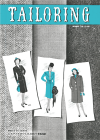DIRECTIONS FOR TAILORING SUITS AND COATS
FUNDRAISING
OUR FUNDRAISING CAMPAIGN HAS ENDED! GOAL: 5000 USD AND CURRENTLY AT 105%!
To keep our Library up and running, we hold a fundraising campaign from September to December and I’m happy to say that it reached its goal!
More donations are always welcome 🙂 This is the link to the donation button: Donate to keep the Antique Pattern Library running!
If you can’t afford to donate, but would like to help the Antique Pattern Library, introducing the Library to people who don’t know of it yet, is very useful, since it broadens our user base and therefore also our future donor base. Blogs, Tiktok, Instagram, Pinterest, Ravelry, Facebook, other social media – show others your favorite publications and what you made using them. Our work is only useful when people actually use it!
If that is not possible either, just enjoy our new publications either for inspiration or for your own work!
NEW PUBLICATION

M-CB010 The Spool Cotton Company – Tailoring Book No. S-18
Softcover stapled, 24 pages. This book expands the directions given in sewing patterns for making suits and coats. Subjects are patterns, threads, reference books, fabrics, pressing, cutting, fitting suit skirt and jacket, fitting coat. The suits and coats are for women only.
Scans donated and edited by Clara Bruning.
Tailoring suits and coats, such as a woman’s suit with skirt and jacket is quite different from sewing pillow cases, and while pattern sheets usually include instructions about how to lay out the pattern pieces on fabric of various widths and summarize how to put the pieces together, actually fitting the clothes to the person needs more detailed explanations for the not-too-experienced seamstress. This book is a step in the right direction, and although success is by no means guaranteed, at least it will help prevent some disastrous errors. Even in fashion houses, new designs were often first made as toile, a test item made of cheap fabric, to help correct initial mistakes without wasting the more expensive fabric that the final item would be made of. This book is dated 1945, so around the end of WW2, which was not a time to be wasting fabric.